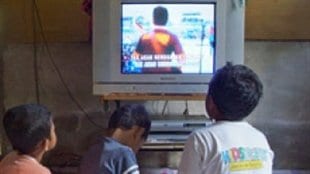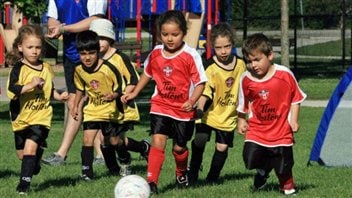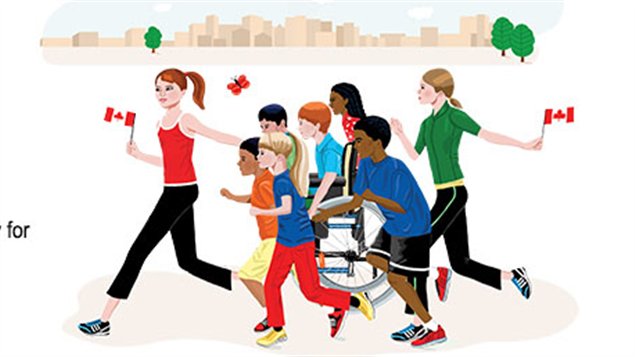The annual report on children’s activity puts Canada near the back of the pack compared with other countries.
In presenting it’s 10th annual report on physical activity levels of children and youth, Active Healthy Kids Canada compared Canadian kids to children in 14 other countries
Lots of opportunity, not so much activity
Surprisingly Canada ranks well in terms of opportunities and infrastructure for children to play.

For example, 95% of parents report local availability of parks and outdoor spaces and 94% report local availability of public facilities and programs for physical activity, such as pools, arenas and leagues.
There are physical education programmes in schools, with access to playing fields, gymnasium, and equipment during school hours, with most Canadian children aged 5 to 19 participating in some form of organized sport or activity.
Yet, overall Canada rated only a D- for youth physical activity. This matched ratings for the US, Australia, and Ireland, with Scotland rating an F. Mozambique and New Zealand topped the list for overall physical activity levels with each country assigned a “B” grade.
In more specific areas, Canada also rated a D for sedentary behaviour, which means low activity and little energy expenditure, and an F for active transportation, eg. walking to school.
2013- report Children urged to walk to school
This latest report was released during the opening of the Global Summit on the Physical Activity of Children, being held in Toronto, Ontario
It seems very young children in Canada are active, but as they age, they become less active, Kids aged three and four spent 5.8 hours being sedentary, growing to 7.6 hours for five to 11-year-olds, then 9.3 hours for 12 to 17-year-olds.

The report blames a “culture of convenience” for the lack of activity. Children spend vast amounts of time in front of tv, computer screens or with mobile phones.
The report notes that even in organized sports less than a quarter of the players get a full hour of moderate to vigorous activity in one session of soccer, and only 2% got this at softball practice. Children on hockey teams spend close to half of the time during practices in moderate/vigorous activity, but in an actual game they are sedentary nearly a third of the time. The report suggests that participating in an organized sport once a week is not enough.
The report says a mix of activities is needed throughout the day, from such things as walking to school instead of being driven, activity at school, organized activities, and free play.
Other countries in the study included, Colombia, England, Finland, Ghana, Kenya, Mexico, Nigeria and South Africa.







For reasons beyond our control, and for an undetermined period of time, our comment section is now closed. However, our social networks remain open to your contributions.